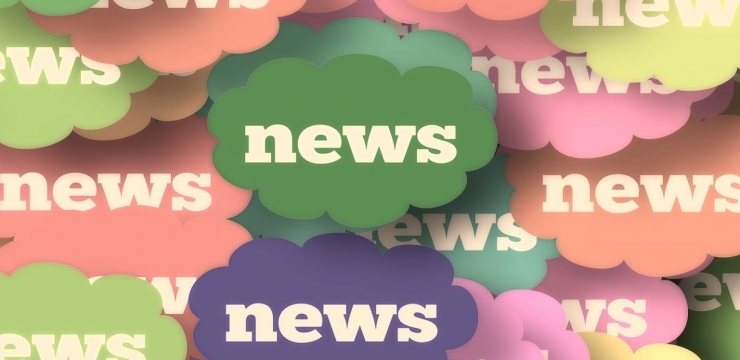Super Bowl 50 has come and gone and we are powering ahead into February. Here are this week’s News Highlights for you.
Super Bowl 50 ad roundup
Which Super Bowl ads were your favorites? We gave you a preview last week and the top 5 ads didn’t disappoint. The AdWeek post “The 5 Best Ads of Super Bowl 50” has a great roundup of the more popular ads. I’m a Christopher Walken fan so the 2016 Kia Optima ad really appeals to me:
The Jeep Super Bowl ad is another low-key winner but there are more to choose from:
On a related note, it as interesting to see that Twitter and Facebook both saw a pretty substantial drop of social media activity this year. You may remember that I pointed out that the Super Bowl has historically been dominated by Twitter which was facing some stiff competition from Facebook and YouTube in the run-up to the event.
According to Marketing Land’s analysis titled “Twitter, Facebook Both See 25-Percent Drop In Super Bowl Social Activity This Year”:
Thanks to Carter Mansbach on Twitter for pointing out that Twitter did eventually share updated information several hours after its original blog post. Though the blog post was not updated, this tweet shows that there were 2.5 billion views from a total of 36 million Super Bowl-related tweets in 2015. That means this year’s total of 27 million tweets is actually about a 25 percent decline, but the number of times those tweets were seen rose from 2.5 billion last year to 4.3 billion this year, a gain of 72 percent. The headline and parts of the text of this article have been updated to reflect this new information.
Still, Twitter’s data is nothing to laugh at but could the decline be a sign of things to come or some ancillary trends specific to Super Bowl 50?
Twitter total audience: 4.3B views of #SB50 Tweets on & off Twitter, based on 27m Tweets (inc. pre/post game) pic.twitter.com/ZZnGvHgwJH
— Twitter Data (@TwitterData) February 9, 2016
Other top Super Bowl ad lists:
- The 10 best commercials of Super Bowl 50 – The Washington Post
- Here are the best Super Bowl 50 commercials – Mashable
Micropayments in exchange for ads
The Ad Blocking War continues and two more perspectives on micropayments as an alternative to ads for ad blockers are worth reading this week. To begin with, Wired Magazine has decided that it will start charging readers for access to articles if they elect to block ads on the site. In a post titled “How WIRED Is Going to Handle Ad Blocking”, Wired’s staff outlined the publication’s planned approach to ad blocking:
On an average day, more than 20 percent of the traffic to WIRED.com comes from a reader who is blocking our ads. We know that you come to our site primarily to read our content, but it’s important to be clear that advertising is how we keep WIRED going: paying the writers, editors, designers, engineers, and all the other staff that works so hard to create the stories you read and watch here.
We know that there are many reasons for running an ad blocker, from simply wanting a faster, cleaner browsing experience to concerns about security and tracking software. We want to offer you a way to support us while also addressing those concerns.
So, in the coming weeks, we will restrict access to articles on WIRED.com if you are using an ad blocker. There will be two easy options to access that content.
- You can simply add WIRED.com to your ad blocker’s whitelist, so you view ads. When you do, we will keep the ads as “polite” as we can, and you will only see standard display advertising.
- You can subscribe to a brand-new Ad-Free version of WIRED.com. For $1 a week, you will get complete access to our content, with no display advertising or ad tracking.
This is not a new approach and, as I wrote in the third part of our Ad Blocker Strategies series, “Ad Blocker Strategies – A New Hope For Publishers”, micropayments are certainly an option many publishers are considering.
Not everyone agrees that this is a viable option, however. Jessica Davies wrote an article for Digiday titled “Why micropayments aren’t the ad blocking antidote” in which she essentially argued that user experience challenges are a problem.
Publishers have flirted with micropayments as a revenue stream for years, mostly unsuccessfully. Now, with the continued rise of ad blocking, new hope again is pinned on pay-per-article schemes for ad-blocking readers. Fat chance.
…
The problems with micropayments are still there, even with ad blocking: Micropayments are a total hassle for people.
I agree that if the user experience isn’t fairly seamless, the solution will be a pretty tough sell. Alternative strategies, though, may not solve the problem of reduced revenue either.
Further reading:
- The Case Against Micropayments by Clay Shirky
- Why micropayments for news schemes struggle to take off
Going native
Native advertising has been pretty hot for a while now and AdExchanger has an interesting piece titled “A Tale Of Two Natives: How Publishers Approach Sponsored Content And Programmatic Native” that contrasts a “walled” sponsored content approach with a more “open” native advertising approach:
In an age of banner blindness, nearly every publisher has added a sponsored content offering. Meanwhile, programmatic native is replacing banners and boxes.
The programmatic native bucket, which includes Outbrain, TripleLift, Sharethrough, Taboola and Yahoo Gemini, features advertising in the form of article snippets, which look similar to sponsored content teasers.
Sponsored content, by contrast, is the ultimate in high-touch. Publishers create content on behalf of brands and distribute it – usually exclusively – on their web and social media sites.
Sponsored content is often conflated with native advertising so an article like this provides a useful contrast between the two options and their respective strengths.

